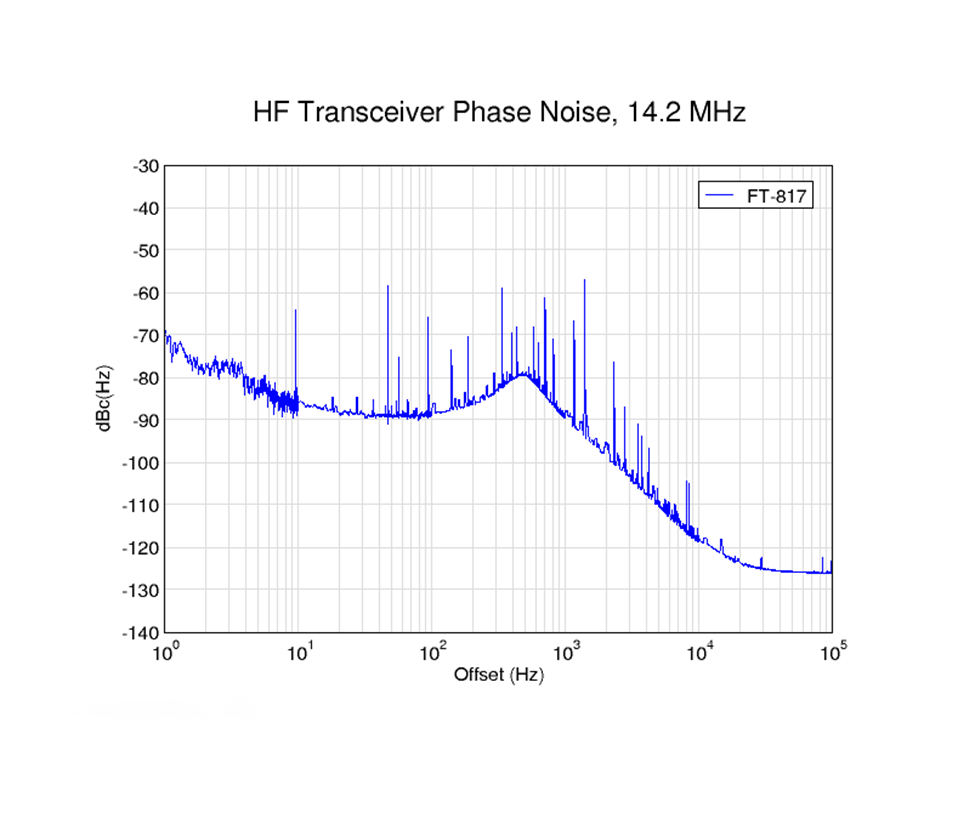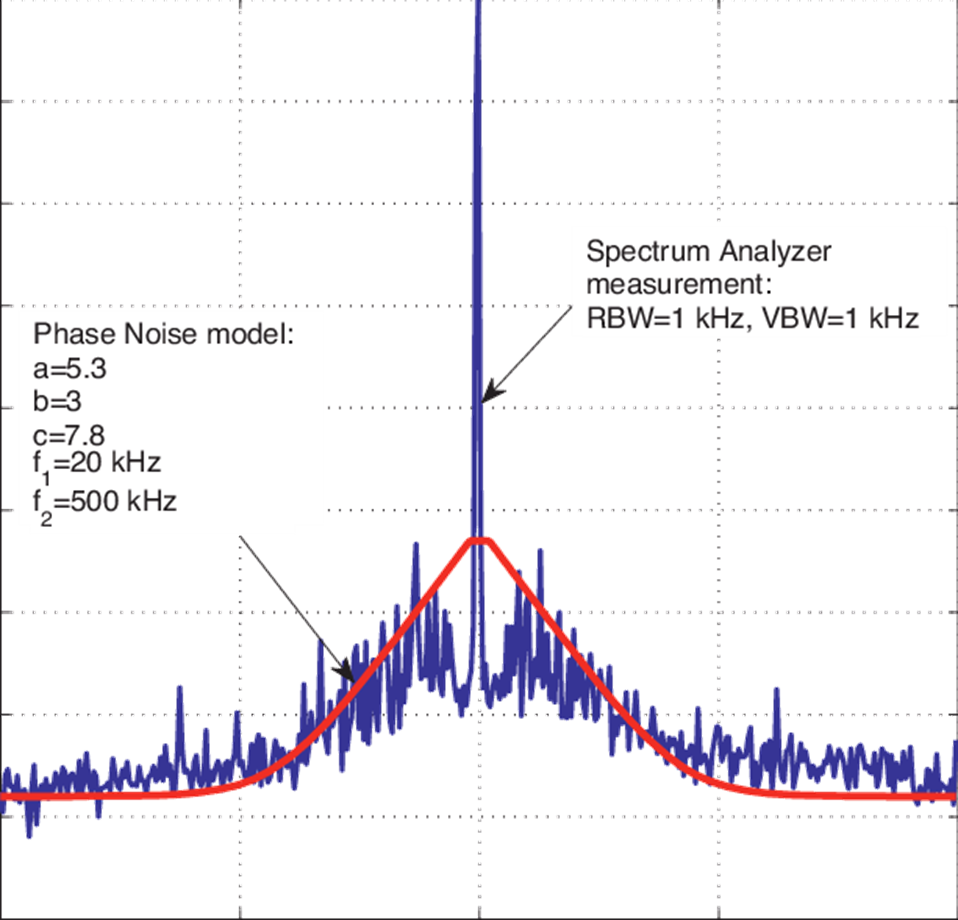This website uses cookies so that we can provide you with the best user experience possible. Cookie information is stored in your browser and performs functions such as recognising you when you return to our website and helping our team to understand which sections of the website you find most interesting and useful.
What is Phase Noise in Electrical Circuits?
28/07/2023, hardwarebee
When a signal in an electrical circuit experiences random fluctuations or changes in phase, this is referred to as phase noise. The stability and quality of signals are impacted, which is a bad thing, especially in communication systems.
Signals are frequently represented as sinusoidal waves in electrical circuits. The position of the waveform within the period of a sinusoidal signal is indicated by the signal’s phase. When this phase varies erratically over time, phase noise results.
Phase noise is frequently brought on by a variety of noise sources found in electronic circuitry and components, including thermal noise, flicker noise, and nonlinearities. These sources of noise introduce random phase fluctuations into the signal, which may cause frequency modulation or spectrum spreading.
The presence of phase noise can harm electrical circuits and communication systems in a number of ways. It can impair oscillators, clock recovery circuits, and frequency synthesizer performance, resulting in timing mistakes and decreased accuracy. Phase noise in wireless communication systems can reduce the signal-to-noise ratio and lower possible data rates, which can have an impact on the performance of the system as a whole.
Circuit designers use strategies like phase-locked loops (PLLs) or frequency synthesizers with low phase noise specifications, noise filtering, and careful component selection to reduce phase noise. These methods aid in reducing phase noise’s negative effects and ensuring the dependable operation of electronic circuits and communication networks.

How is Phase Noise Detected?
Specialized tools and methods are required for finding or measuring phase noise. The following are some typical techniques for evaluating and quantifying phase noise in electrical circuits:
- Spectrum Analyzer: The primary instrument for measuring phase noise is the spectrum analyzer. It shows how a signal’s power spectral density changes with frequency. You can detect the presence of phase noise by observing the sidebands surrounding the carrier frequency by connecting the signal of interest to the spectrum analyzer.
- Phase Noise Analyzer: A phase noise analyzer is a specialized tool made just for measuring phase noise. Compared to a spectrum analyzer, it offers measurements that are more precise and accurate. Phase noise analyzers may examine a signal’s jitter as well as phase noise, offering comprehensive details on the noise properties.
- Cross-Correlation Method: In this technique, the phase of a signal is compared to that of a steady reference signal. Any phase differences or signal noise can be found by employing a high-precision phase detector. The phase noise characteristics are then measured by analyzing the phase detector’s output.
- The two-channel method compares the phases of two identical signals that are created using this method. While the other signal is the one being tested, the other signal acts as a reference. The phase noise of the test signal can be calculated by measuring the phase difference between the two signals.
- Allan Variance Method: This statistical technique evaluates a signal’s stability and noise characteristics. The phase noise can be identified by measuring the phase difference at various time intervals and examining the variation. The long-term stability of oscillators and clocks can be evaluated using this technique in particular.
It should be noted that the low noise levels involved make precise measurement of phase noise difficult. For accurate results, it is crucial to carefully evaluate measurement settings, calibrate the equipment, and comprehend its constraints. For accurate phase noise measurements, consulting with professionals or employing specialized test equipment is advised.

What are the Impacts of Phase Noise?
Electrical circuits and communication systems may be affected by phase noise in several ways, including:
1. Timing mistakes: Phase noise can result in timing mistakes in systems like data transmission, clock synchronization, and signal processing that depend on precise timing. Random phase variations can result in inaccurate signal timing interpretation, data corruption, and decreased system performance.
2. Signal Distortion: Phase noise, particularly in communication systems, can cause signal distortion. Random phase changes can result in frequency modulation, which spreads the signal’s spectrum characteristics. Due to the spectral spreading, there may be more noise, interference, and poorer signal quality in nearby frequency channels.
3. Degraded Signal-to-Noise Ratio (SNR): Phase noise can lower a communication system’s signal-to-noise ratio. Phase variation noise raises the overall noise floor, making it harder for the system to identify the required signal from the background noise. Reduced signal quality, higher bit error rates, and shorter communication ranges can result from this.
4. Frequency Instability: Phase noise and frequency instability frequently go hand in one. Frequency modulation is a result of changes in a signal’s instantaneous frequency brought on by changes in phase. When exact and consistent frequencies are necessary, such as in frequency synthesizers, oscillators, and clocks, this instability can be extremely problematic.
5. Data Rate Restrictions: In high-speed communication systems, phase noise can restrict the data rates that are possible. The signal waveform may be distorted by random phase variations, lowering its integrity and making it more challenging to recognize characters or bits precisely. This restricts the system’s ability to send data at faster rates.
6. Interference with Neighboring Channels: Phase noise in wireless communication systems can disperse the signal energy onto nearby frequency channels. This spectral leakage can disrupt neighboring channels, lowering the overall spectral efficiency and interfering with other signals that operate in close-by frequency ranges.
Engineers use methods including filtering, signal conditioning, phase-locked loops (PLLs), and advanced modulation schemes to reduce the impacts of phase noise. These techniques enhance signal integrity, lessen the effects of phase noise, and guarantee dependable communication and system performance.
How Can Phase Noise be Prevented in Devices?
Devices must be carefully designed, and several strategies must be used, to prevent phase noise. Although phase noise may not be completely eliminated, the following steps can assist lessen its negative effects:
- Component selecting: When choosing electronic components, choose those with minimal inherent noise characteristics. Choose low-noise amplifiers, oscillators, and filters if you want your system to run with minimal phase noise.
- Signal Conditioning: Use the right signal conditioning methods to lessen the noise that is introduced by outside influences. Shielding delicate parts, cutting down on electromagnetic interference (EMI), and making sure appropriate grounding and power supply decoupling are all part of this.
- Noise Filtering: To reduce noise in the signal route, use suitable filtering methods. To eliminate unwanted noise outside the target frequency band, band-pass filters can be used. Low-pass filters can aid in reducing the amount of high-frequency noise.
- Control of Temperature: Changes in temperature can impair the stability of electrical components and introduce phase noise. Utilize thermal management strategies, such as heat sinks, fans, or temperature-controlled rooms, to maintain a constant working temperature.
- Oscillator Design: Opt for frequency synthesizers or oscillators with minimal phase noise requirements. These elements are essential for producing steady and noise-free clock signals. Use crystal oscillators or voltage-controlled oscillators (VCOs) that have been tuned for low-phase noise performance.
- Phase-Locked Loops (PLLs): PLLs are frequently employed in frequency synthesis and clock-generating circuits to reduce phase noise. A PLL can lower the output signal’s phase noise by locking it to a reliable reference signal. Use loop filters that are designed properly and PLLs with minimal phase noise characteristics.
- Feedback and Control systems; Implement feedback systems to stabilize and control the phase of signals. Feedback loops help to correct phase fluctuations and lessen the effects of noise like automatic gain control (AGC) and phase-locked loops.
- System-Level issues: To reduce interference and crosstalk, pay attention to system-level design issues such as adequate grounding, isolating sensitive components, and routing of signal cables.
- Careful PCB Layout: Follow standard practices for PCB layout, such as reducing trace lengths, avoiding high-impedance loops, and isolating delicate analog and digital components. Layout strategies that are done properly can help to minimize noise coupling into the signal channel.
- Advanced Modulation Techniques: In some circumstances, phase noise can be mitigated using advanced modulation techniques. For instance, methods like phase shift keying (PSK) or quadrature amplitude modulation (QAM) can increase phase stability and noise tolerance.
It’s vital to remember that the unique application, the required degree of phase noise, and the resources available will all affect how effective these methods are. For the best phase noise reduction, it is advised that experienced engineers be consulted, and that the system needs to be carefully taken into account.
Do We Have Any Anti Phase Noise Device?
Phase noise cannot be totally eliminated by a single “anti-phase noise device”. It is impossible to completely eliminate phase noise because it is a defining characteristic of electronic parts and circuits.
To minimize phase noise in some applications, there are, nonetheless, tools and methods available. They include, among others:
- Low-Phase-Noise Oscillators: In contrast to normal oscillators, these oscillators have lower phase noise performance due to the use of specific circuit topologies and high-quality components in their design.
- Ultra-Stable Crystal Oscillators (OCXOs and TCXOs): Oven-Controlled Crystal Oscillators (OCXOs) and Temperature-Compensated Crystal Oscillators (TCXOs) are made to actively manage the temperature of the crystal oscillator to provide greater frequency stability and reduced phase noise.
- Low-Noise Amplifiers (LNAs): LNAs are employed to boost weak signals with the least amount of extra noise, including phase noise.
- Digital Signal Processing (DSP) Techniques: State-of-the-art digital signal processing algorithms and methods can help communication systems combat the impacts of phase noise.
- Phase-Locked Loops (PLLs) and Frequency Synthesizers: As was already indicated, PLLs and frequency synthesizers can be used to reduce output signal phase noise by locking onto a steady reference signal.
- Cryogenic Cooling: In some sophisticated scientific and research applications, lowering the temperature of electronic components to cryogenic levels helps lower noise, particularly phase noise.
It’s crucial to keep in mind that while these tools and methods can considerably reduce phase noise, they cannot entirely get rid of it. The objective is to reduce phase noise’s negative effects on electrical circuit and communication system performance to a level suitable for the intended application. The level of required phase noise reduction and the application’s restrictions determine which device or technique should be used.
Source image: https://www.researchgate.net/figure/Phase-noise-spectrum-measurement-and-its-derived-model_fig6_259160187










